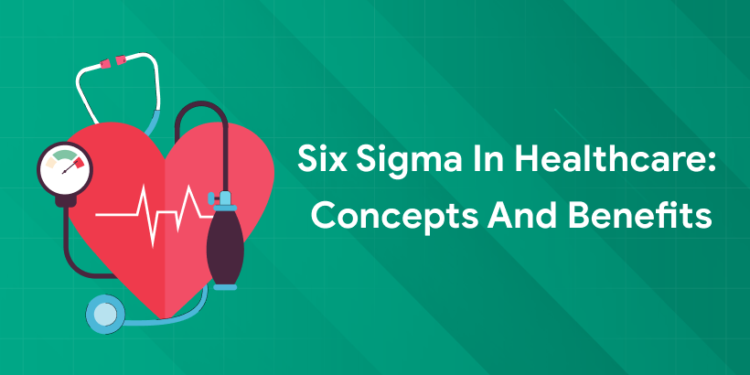Table of Contents
Key Takeaways:
- Six Sigma significantly improves patient outcomes by reducing medical errors, lowering infection and complication rates, and decreasing hospital readmissions, resulting in safer and higher quality care.
- It enhances operational efficiency by streamlining workflows, reducing wait times, and optimizing resource utilization across clinical and administrative departments.
- Cost savings are a major benefit, achieved through eliminating waste, minimizing rework, better inventory control, and reducing labor and overtime expenses without compromising care quality.
- The approach boosts patient satisfaction by creating reliable, timely, and accurate healthcare experiences that promote trust and positive patient feedback.
- Six Sigma fosters a culture of continuous improvement and teamwork, increasing staff engagement and collaboration, while also helping healthcare organizations meet regulatory compliance and safety standards effectively.
Introduction
Every day, countless lives depend on the precision and efficiency of healthcare delivery. Behind the scenes, hospitals and clinics face tremendous pressures to not only improve patient outcomes but also manage costs and resources wisely. Imagine arriving at a healthcare facility where everything runs smoothly—from the moment you check in to when you leave with a clear treatment plan—with minimal delays and errors. This vision is becoming reality thanks to Six Sigma, a powerful methodology that healthcare organizations are adopting to bring greater reliability and excellence to patient care.
Six Sigma has its roots in manufacturing but has evolved into a vital tool for healthcare improvement. It is centered on using data and rigorous analysis to uncover gaps in quality and efficiency, then systematically applying solutions. For patients, healthcare professionals, and administrators alike, Six Sigma offers a roadmap to safer, faster, and more cost-effective care.
What is Six Sigma in Healthcare?
1: What is the primary role of a hospital administrator?
Six Sigma is a structured, data-driven methodology originally designed to reduce variation and defects in manufacturing processes. When adapted for healthcare, it focuses on minimizing errors and inconsistencies in clinical and administrative tasks to ensure patients receive the best possible care consistently. The goal is to reduce defects to fewer than 3.4 per million opportunities, translating to near-perfect quality in healthcare processes.
The heart of Six Sigma in healthcare lies in the DMAIC framework:
- Define: Clearly specify the problem or process that needs improvement (e.g., prolonged patient waiting times).
- Measure: Collect accurate data to establish how the process is currently performing.
- Analyze: Use statistical techniques to find root causes of inefficiency or errors.
- Improve: Develop and implement practical solutions based on data insights.
- Control: Maintain gains through continuous monitoring and standardized procedures.
By applying this cycle, healthcare providers can transform complex workflows into streamlined, reliable systems, enhancing both patient safety and operational performance.
You might also like: What is the Medical Records Department in a Hospital?
Hospital Administration Course with Assured Career Growth
Hospital Administration Course by Entri App: Master essential healthcare management skills, gain certification, and secure top roles in leading hospitals
Join Now!Core Concepts and Process of Six Sigma in Healthcare
Fundamentally, Six Sigma revolves around identifying and eliminating defects—defined here as any variation from the ideal healthcare outcome or protocol. The DMAIC approach enables teams to tackle specific challenges systematically.
For example, take the problem of emergency department congestion:
- Define: The problem is excessive patient wait times beyond acceptable standards.
- Measure: Data shows an average wait time of 90 minutes.
- Analyze: Statistical analysis reveals bottlenecks in patient triage and delays in physician availability.
- Improve: Solutions include reorganizing triage staffing, introducing fast-track lanes, and better scheduling of physicians.
- Control: Weekly monitoring of wait times to ensure they consistently meet target levels.
Statistical tools such as control charts, Pareto analysis, and cause-and-effect diagrams empower healthcare teams to quantify issues and prioritize interventions effectively.
Read in detail: What are Electronic Medical Records?
| Six Sigma Phase | Healthcare Example | Key Activity |
|---|---|---|
| Define | Reducing medication errors | Identify error-prone processes |
| Measure | Tracking patient discharge times | Collect baseline data and establish metrics |
| Analyze | Investigating surgical site infections | Perform root cause analysis |
| Improve | Implementing checklist protocols | Develop solutions and pilot test |
| Control | Monitoring lab turnaround times | Standardize process and analyze variation |
This table illustrates how DMAIC phases translate into concrete healthcare improvements.
Also read: EMR vs EHR vs HMS
Benefits of Six Sigma in Healthcare
Implementing Six Sigma delivers measurable improvements across multiple dimensions of healthcare:
- Enhanced Patient Outcomes: By standardizing procedures and reducing variability, hospitals see fewer mistakes and higher survival rates. Examples include reductions in surgical site infections and medication errors.
- Operational Excellence: Streamlined workflows reduce wait times in emergency rooms and outpatient clinics, helping hospitals serve more patients faster without compromising quality.
- Cost Reduction: Eliminating inefficiencies lowers wasted supplies, labor costs, and readmission rates—delivering significant financial savings that can be reinvested in patient care.
- Increased Patient Satisfaction: Reliable, timely care improves patient experience, evidenced by higher satisfaction scores and positive feedback.
- Empowered Workforce and Collaboration: Six Sigma equips healthcare staff with tools to identify problems and improve processes collaboratively, fostering a culture of engagement and continuous learning.
- Regulatory Compliance and Safety: Following defined protocols and monitoring outcomes helps meet accreditation standards and minimizes safety risks.
Also read: What is a Hospital Information System?
Statistics underscore these benefits: a healthcare system using Six Sigma cut emergency wait times by 50%, reduced medication errors by 30%, and saved millions annually through waste reduction.
Real-World Applications and Case Studies
Many healthcare institutions have harnessed Six Sigma with transformative results. Examples include:
- A regional hospital addressing emergency department throughput achieved a 50% reduction in patient wait times by redesigning triage and care pathways.
- A multi-hospital network reduced medication administration errors by over 30% after introducing Six Sigma-based standardized protocols and staff training initiatives.
- Laboratories improved test accuracy and turnaround times, enabling faster diagnosis and treatment initiation for critical patients.
- Coordinated care efforts driven by Six Sigma reduced 30-day readmission rates by improving discharge planning and patient education.
These real-world successes validate Six Sigma as a critical tool for improving safety, quality, and efficiency in diverse healthcare settings.
Also read: Types of Medical Records and Their Uses
Hospital Administration Course with Assured Career Growth
Hospital Administration Course by Entri App: Master essential healthcare management skills, gain certification, and secure top roles in leading hospitals
Join Now!Challenges in Implementing Six Sigma in Healthcare
Despite its benefits, Six Sigma implementation faces some barriers:
- Complexity of Patient Care: The variability of individual patient conditions can complicate standardization efforts.
- Resistance to Change: Staff accustomed to traditional practices may be hesitant to adopt new methodologies.
- Data Collection Issues: Healthcare environments may lack consistent, accurate data gathering mechanisms.
- Resource Limitations: Training and sustaining Six Sigma initiatives require investment in time and personnel.
- Leadership Commitment: Strong leadership is needed to champion culture change and resource allocation.
Overcoming these challenges demands comprehensive training, open communication, and leadership that fosters a data-driven, improvement-focused culture.
You might also like: Duties and Responsibilities of a Medical Records Manager
Entri’s Hospital Administration Course
For healthcare professionals aspiring to lead improvements like these, Entri offers a specialized Hospital Administration course based in Kerala that includes thorough training on quality management and process improvement tools such as Six Sigma.
Key advantages of the Entri course:
- Detailed coverage of Hospital Administration principles, including Six Sigma methodology tailored for healthcare.
- Practical skills for managing hospital operations, improving patient care quality, and optimizing resources.
- Placement assistance connecting students with healthcare organizations and opportunities.
- Real-world scenarios and case studies to prepare students to implement Six Sigma projects effectively.
- Designed by industry experts with updated material reflecting current healthcare trends.
Joining this course equips you to drive excellence in healthcare administration confidently.
Explore the course here: Entri Hospital Administration Course in Kerala.
Conclusion
Six Sigma stands as a powerful catalyst for advancing healthcare quality and operational performance. Its disciplined, data-centric approach enables healthcare providers to minimize errors, enhance efficiency, reduce costs, and ultimately improve patient outcomes and satisfaction. While challenges exist, the benefits are profound and measurable, making Six Sigma an indispensable strategy for healthcare leaders committed to excellence.
If you aspire to be at the forefront of healthcare transformation, gaining Six Sigma expertise through quality education such as Entri’s Hospital Administration course is an essential step. Embrace the future of healthcare today by equipping yourself to lead with data-driven confidence and innovation.
Hospital Administration Course with Assured Career Growth
Hospital Administration Course by Entri App: Master essential healthcare management skills, gain certification, and secure top roles in leading hospitals
Join Now!Frequently Asked Questions
Can Six Sigma help reduce hospital readmissions?
Yes, Six Sigma projects targeting discharge planning and patient education have been proven to decrease readmission rates significantly.
Does Six Sigma require advanced statistical knowledge?
Not necessarily; training programs simplify tools for practical use by healthcare professionals of varied backgrounds.
Is Six Sigma applicable only to large hospitals?
No, Six Sigma principles can be applied in organizations of any size, including outpatient clinics and smaller healthcare facilities.
How does Six Sigma improve patient safety?
By identifying error-prone processes and standardizing care, Six Sigma reduces variations that can lead to mistakes.
How long does it take to see Six Sigma results in healthcare?
Some improvements can be evident within months, but sustainable change requires ongoing control and monitoring.















